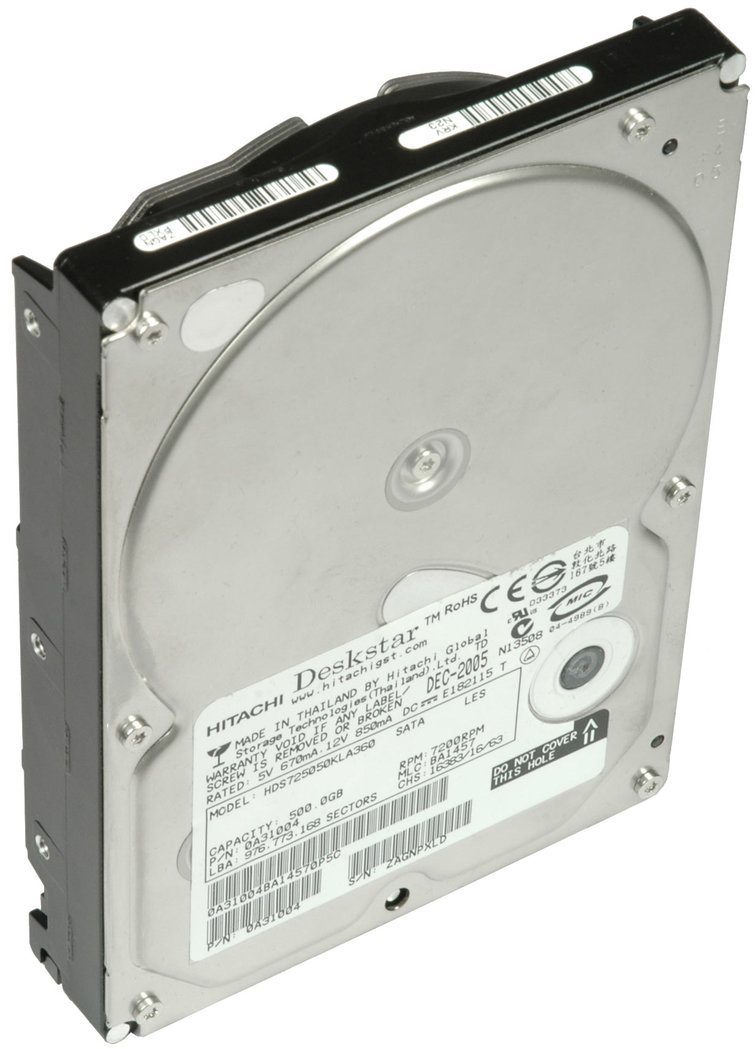Do You Need A New Hard Drive With Your Windows 7 Upgrade?
Does A HDD Upgrade Make Sense?
Users typically only hear about advances in the hard drive space when there are capacity breakthroughs or fresh flagship drives: hitting a new terabyte level, higher RPMs, lower-power models--stuff like that. But each hard drive generation is usually faster than the one that preceded it, which helps to reduce boot and application start times. Also, let’s not forget that Windows 7 is here, and many people who vehemently stood by Windows XP when Vista was around are now considering the upgrade.
So why not combine both, then? A system reinstall is necessary if you want to upgrade from Windows XP to Windows 7, and a new hard drive could theoretically provide a bit more performance for the new system. We grabbed an older system and replaced the installed 500GB drive with a brand new 2TB disk to test this theory out.


Understanding Hard Drive Performance
We’ve written about hard drive performance several times:
A Look Into the Hard Drive’s Future: Overview, market share, future technologies
Understanding Hard Drive Performance: Storage density, recording technology, platters, form factor, buffer
Parallel Processing: Single, Dual, Quad Hard Drives: An exploration of RAID performance benefits
Get Tom's Hardware's best news and in-depth reviews, straight to your inbox.
15 Years of Hard Drive History: Capacities Outran Performance: Five different drives between 1991 and 2006 compared
Accelerate Your Hard Drive by Short Stroking: A performance analysis of short stroking, which reduces the head’s activity radius and capacity for the sake of improving I/O performance
There are a few basic things you need to know when you want to purchase a new hard drive. First of all, it's important to understand the basic characteristics of all hard drives. They are based on one or more rotating platters coated with magnetic particles that serve to store bits of data. Heads, like the needles on old record players, take care of reading and writing data on both sides of each platter. Different interfaces are available to connect drives to a PC. Additional technologies, like buffer memory and command reorganization through a feature called NCQ (Native Command Queueing), influence performance. The basic concept has not changed over time, but the density of data on the platters has been increasing significantly for many years. Today’s highest-capacity drives provide a total capacity of 2TB distributed across four platters.
Now we can start to play around with test parameters. Access time and I/O performance depend on agility, positioning speed, and head precision. But they also depend on rotation speed, as waiting times for required data (referred to as rotational latency) are shorter at higher spindle speeds. Faster speeds also mean faster sequential throughput, but they require a more precise and robust drive design. Additionally, higher performance comes at the expense of recording density, and hence, capacity. Power consumption has become an additional key metric, as performance typically has a direct relation to power consumption. More power translates into greater heat dissipation, and more components at high speeds typically turns into higher noise levels.
In a nutshell, it makes a lot of sense to always get the newest hard drive models possible. These will provide the highest recording density and consequently store data on the fewest possible platters. This reduction in complexity generally yields lower power consumption, as well.
The Impact of Different Hard Drives
The real-life performance difference between a hard drive generation and the generation that follows it usually isn’t large enough to justify a replacement. However, there are more aspects to consider. We took a three year old Core 2 Duo desktop PC and installed a similarly-aged Hitachi Deskstar 7K500 drive. We then took Hitachi’s latest desktop drive, the Deskstar 7K2000, and used it as a drop-in replacement for the older 500GB disk.
Should your drive be at least several years old, you can expect to get several benefits from a new drive:
- Significantly higher capacity at lower cost
- Higher performance
- Lower power consumption
- (Likely) lower noise levels
We compared the dated drive with the latest flagship model on our storage test system, but we also decided to copy the existing Windows XP installation onto the new drive. This provided direct performance comparison using SYSmark 2007. Finally, we installed Windows 7 and repeated the same tests.
Current page: Does A HDD Upgrade Make Sense?
Next Page Old Drive: Hitachi Deskstar E7K500